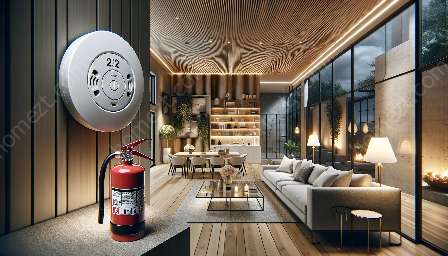When it comes to protecting homes from fire hazards, fire safety building codes and standards play a crucial role. In this comprehensive guide, we'll delve into the importance of these regulations, their connection to home fire safety, and how they contribute to overall home security.
Understanding Fire Safety Building Codes and Standards
Fire safety building codes and standards are a set of regulations designed to ensure that residential properties meet specific safety requirements to prevent, detect, and mitigate the impact of fires. These codes and standards are established by reputable organizations and government agencies to create a safe and secure environment for homeowners and residents.
Connection to Home Fire Safety
Home fire safety is directly linked to compliance with fire safety building codes and standards. By adhering to these regulations, homeowners can significantly reduce the risk of fire-related incidents within their properties. From the installation of smoke detectors and fire extinguishers to the construction of fire-resistant materials, these codes and standards provide the framework for safeguarding homes against fire threats.
Implications for Home Safety and Security
Fire safety building codes and standards not only address fire prevention but also contribute to overall home safety and security. By incorporating features such as fire-resistant building materials, adequate escape routes, and proper emergency lighting, these regulations enhance the resilience of residential properties against fire emergencies. Additionally, they influence the design of security systems and emergency response protocols, further fortifying the protective measures for homeowners and their families.
Key Components of Fire Safety Building Codes and Standards
Several essential elements form the core of fire safety building codes and standards, ensuring comprehensive protection for homes:
- Fire Detection and Alarm Systems: Requirements for the installation and maintenance of smoke detectors, fire alarms, and carbon monoxide detectors to provide early detection of fire hazards.
- Fire-Resistant Construction Materials: Specifications for using fire-resistant materials in building structures, including walls, ceilings, and roofs to prevent the rapid spread of flames.
- Escape Route Planning: Guidelines for designing and maintaining clear and accessible escape routes in the event of a fire, such as properly marked exits and unobstructed pathways.
- Fire Suppression Systems: Standards for integrating fire extinguishers, sprinkler systems, and other suppression equipment to contain and extinguish fires effectively.
- Emergency Lighting and Signage: Requirements for emergency lighting and signage to ensure visibility and guidance during fire emergencies, facilitating safe evacuation.
Compliance and Enforcement
Compliance with fire safety building codes and standards is essential for all homeowners to uphold the safety and security of their residences. Local building authorities and fire departments are responsible for enforcing these regulations through inspections, permits, and certifications. It is imperative for homeowners to stay informed about the specific requirements applicable to their region and ensure that their homes meet or exceed the prescribed standards.
Continual Improvement and Awareness
The landscape of fire safety building codes and standards is dynamic, with ongoing research and developments leading to regular updates and revisions. Homeowners should stay engaged with relevant industry publications, local agencies, and professional organizations to stay informed about the latest advancements and recommendations. By staying proactive and informed, homeowners can take proactive measures to enhance the fire safety and security measures within their homes.
Conclusion
Fire safety building codes and standards form the backbone of home safety and security, providing a robust framework for preventing and mitigating fire hazards. Their integration into residential properties not only reduces the risk of fire-related incidents but also ensures that homeowners and their families can live in a secure and protected environment. By understanding and adhering to these regulations, homeowners can safeguard their homes against fire threats and contribute to the overall safety and security of their communities.


